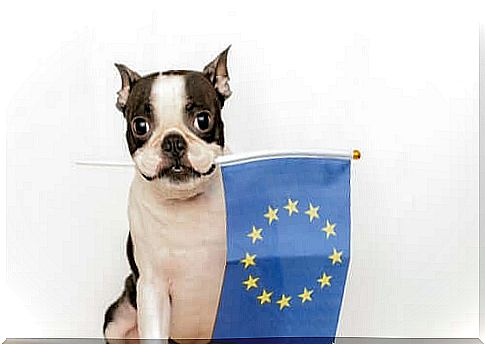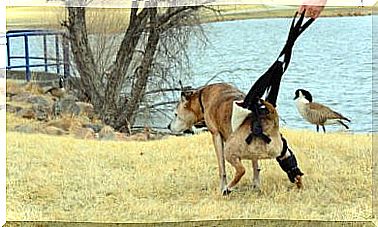European Convention For The Protection Of Pets

In early 2018, Spain finally decided to ratify the European Convention for the Protection of Pets. It is the eighteenth country in this region to join the initiative. And with that, it has committed itself to taking legal steps to combat animal abuse and neglect.
Although Spain has only recently recognized the European Convention for the Protection of Pets , it has been in force for more than three decades. Specifically, the official announcement took place in 1987, almost ten years after the Universal Declaration of Animal Rights was promulgated by UNESCO.
With the publication of the agreement, a new framework for animal welfare laws was created on the European continent. While it does not have the reach to legislate on a national basis, it has nonetheless been a driving force behind change.
In doing so, it has driven the discernible legislative changes in Europe and the expansion of public policy in the area of pets. That is the case with the legality of seizures.
What does the European Convention for the Protection of Pets look like?
As the name suggests, it is a regulation that European countries can adhere to of their own free will. From the beginning, the text makes clear the main aim of its creation. Promoting concrete measures to improve the protection of domestic animals living on the continent.
To be more precise, the introduction to the Convention states that all human beings have a moral duty to respect all living beings. Therefore, animal welfare laws do not arise from temporary political circumstances, but from human moral responsibility.

It must always be remembered that regardless of social environment, it is our duty to ensure that all species have the necessary conditions to lead their lives in a dignified manner.
In this regard , the Convention highlights the emotional, spiritual and historical connection. This connects us with the pets and shows a positive effect on the quality of life on an individual and social level.
Hence, it primarily focuses on enumerating good practices that enable responsible animal husbandry.
The Convention also promotes a range of public policies and specific legal measures to combat the abandonment and abuse of animals.
As well as the resulting consequences that pose a threat to public health. Like the overpopulation on the streets, for example.
Some contributions to the European Convention for the Protection of Pets
One of his most important contributions to animal welfare was the denaturation of aesthetic mutilations. In the past, many breeds have been subjected to mutilation practices, such as cropping ears and tails, in order to meet aesthetic standards.
Or to guarantee supposedly better performance in certain activities such as hunting.
But with the ratification of the European Convention , all signatory countries have committed themselves to prohibiting such practices through specific regulations. In Spain, the decision is a big step towards standardizing the various autonomous provisions.
In practice, these rules have led to various conflicts with hunters. Because they claim that they are affected by the “wrong and extreme concepts” of the animal rights activists.
Speaking of the sport of hunting, the Convention also regulates the use of animals in recreational activities.
According to its regulations, animals may only be used for activities that do not involve pain, humiliation, suffering or risk to their physical and mental health.

Governments as key actors in promoting animal welfare
Another contribution of the Convention to Promote Animal Welfare is to give central governments an explicit responsibility to promote public policies in support of responsible adoption and husbandry.
For example, educating the public about the importance of using effective contraceptive methods.
It also reaffirms the need to take concrete action to combat the abandonment of animals. Because this leads to a rapid increase in the street population.
Since its adoption, it has been possible to verify that all countries have introduced stricter penalties for abandoning and mistreating animals.
In addition , the very concept of animal abuse has changed and expanded in laws. Nowadays this includes not only the physical integrity of the animal, but also its mental and emotional wellbeing.
Therefore, any kind of abuse, violence or exploitation in Europe can be reported as animal abuse.









